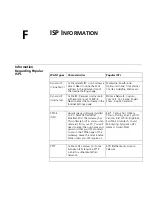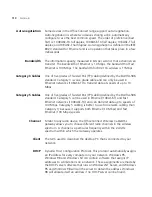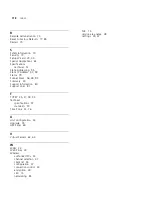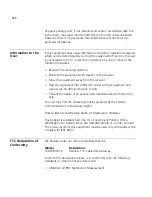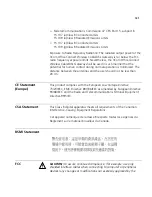
G
LOSSARY
802.11b
The IEEE specification for wireless Ethernet which allows speeds of up to
11 Mbps. The standard provides for 1, 2, 5.5 and 11 Mbps data rates.
The rates will switch automatically depending on range and environment.
802.11g
The IEEE specification for wireless Ethernet which allows speeds of up to
54 Mbps. The standard provides for 6, 12, 24, 36, 48 and 54 Mbps data
rates. The rates will switch automatically depending on range and
environment. Note that if an 802.11g client is connected to an 802.11b
Access Point, the client will only operate at the 802.11b supported data
rates of 1, 2, 5.5 or 11 Mbps.
10BASE-T
The IEEE specification for 10 Mbps Ethernet over Category 3, 4 or 5
twisted pair cable.
100BASE-TX
The IEEE specification for 100 Mbps Fast Ethernet over Category 5
twisted-pair cable.
Access Point
An Access Point is a device through which wireless clients connect to
other wireless clients and which acts as a bridge between wireless clients
and a wired network, such as Ethernet. Wireless clients can be moved
anywhere within the coverage area of the access point and still connect
with each other. If connected to an Ethernet network, the access point
monitors Ethernet traffic and forwards appropriate Ethernet messages to
the wireless network, while also monitoring wireless client radio traffic
and forwarding wireless client messages to the Ethernet LAN.
Ad Hoc mode
Ad Hoc mode is a configuration supported by most wireless clients. It is
used to connect a peer to peer network together without the use of an
access point. It offers lower performance than infrastructure mode, which
is the mode the gateway uses. (see also Infrastructure mode.)
Содержание OfficeConnect 3CRWE53172
Страница 10: ...10 ABOUT THIS GUIDE ...
Страница 18: ...18 CHAPTER 1 INTRODUCING THE GATEWAY ...
Страница 24: ...24 CHAPTER 2 HARDWARE INSTALLATION ...
Страница 100: ...100 APPENDIX C TECHNICAL SPECIFICATIONS ...
Страница 116: ...116 GLOSSARY ...
Страница 123: ......













